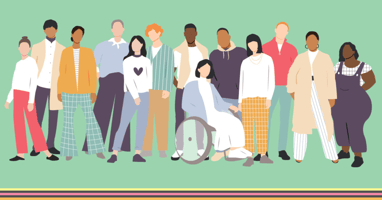Let’s be honest: if your communications aren’t accessible, your inclusion efforts fall short. You...
Creating accessible reports for diverse audiences: Neurodivergent, blind or elderly
Creating Accessible Reports for Diverse Audiences: Neurodivergent, Blind, Elderly
Summary
Accessible reports benefit everyone — especially people who are neurodivergent, blind, or older. This blog explores inclusive design principles that make reports easier to read, understand and navigate, and shows how Meet Aandi can help you reach all your audiences.
________________________________
Reports are a key part of communication across sectors like government, education and healthcare. They share important data, stories and decisions. If reports are not designed with accessibility in mind though, they can leave people behind especially those who are blind, neurodivergent or elderly.
Accessible reporting is about more than ticking boxes. It’s about making sure every person can access and understand the information you’re sharing. At Meet Aandi, we specialise in creating and remediating reports that meet accessibility standards and are usable by all.
Why reports must be accessible to all readers
Some people rely on screen readers to access digital content. Others need clear layout and simple structure to support focus or reduce sensory overload. Older adults may benefit from larger text, strong contrast and easy navigation.
When reports aren’t designed with these users in mind, important information gets lost. Worse, your organisation may risk non-compliance with WCAG guidelines or the Disability Discrimination Act.
Inclusive reports aren’t just helpful — they are essential.
Common barriers in reports (and how to fix them)
Reports can present unique accessibility challenges. Here are some common issues and what to do about them:
-
Dense or cluttered layout
Use white space, clear headings and chunked content to improve readability. -
Charts and graphs without descriptions
Add alt text or long descriptions to explain key data visually and textually. -
Complex tables
Structure tables with clear headers and avoid merged cells when possible. -
Unclear language or jargon
Use plain language where appropriate. Add glossaries for complex terms. -
Lack of navigation aids
Include bookmarks, headings and logical reading order to support screen reader navigation. -
Small fonts or low contrast
Use readable font sizes (12pt and above), high contrast colours, and legible typefaces.
How to support neurodivergent readers
People who are neurodivergent may experience sensory sensitivity, attention differences or difficulty with processing complex layouts. To support them:
-
Break information into short sections
-
Use consistent formatting and structure
-
Avoid flashing content or animations
-
Use diagrams and visuals to aid understanding (with descriptions)
How Meet Aandi supports accessible reporting
Our team specialises in making reports accessible to a wide range of readers. Whether your report is a technical document, policy summary, annual report or strategic plan, we’ll:
-
Tag your report correctly for screen readers
-
Fix reading order and heading structure
-
Add meaningful alt text to images and data visuals
-
Ensure WCAG and PDF/UA compliance
-
Check contrast, font and layout choices for readability
-
Report on (make changes if we have the native design files) any areas of the design that is not accessible
We also understand the human side of accessibility. We tailor our remediation to suit your intended audience — whether it’s for a board of decision-makers, students, or members of the public with disability.
With Meet Aandi, your report will be accessible, compliant and inclusive from start to finish.





